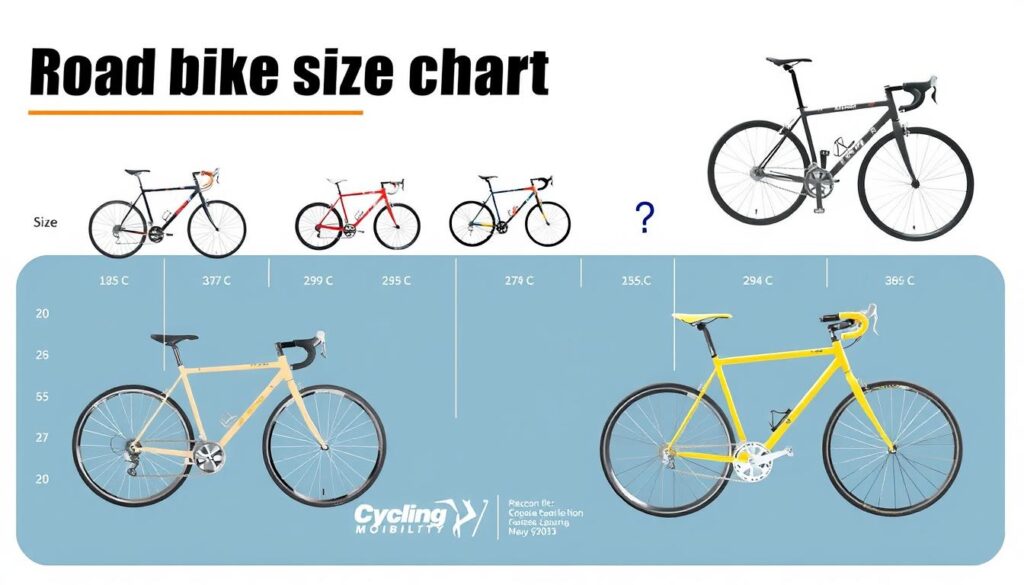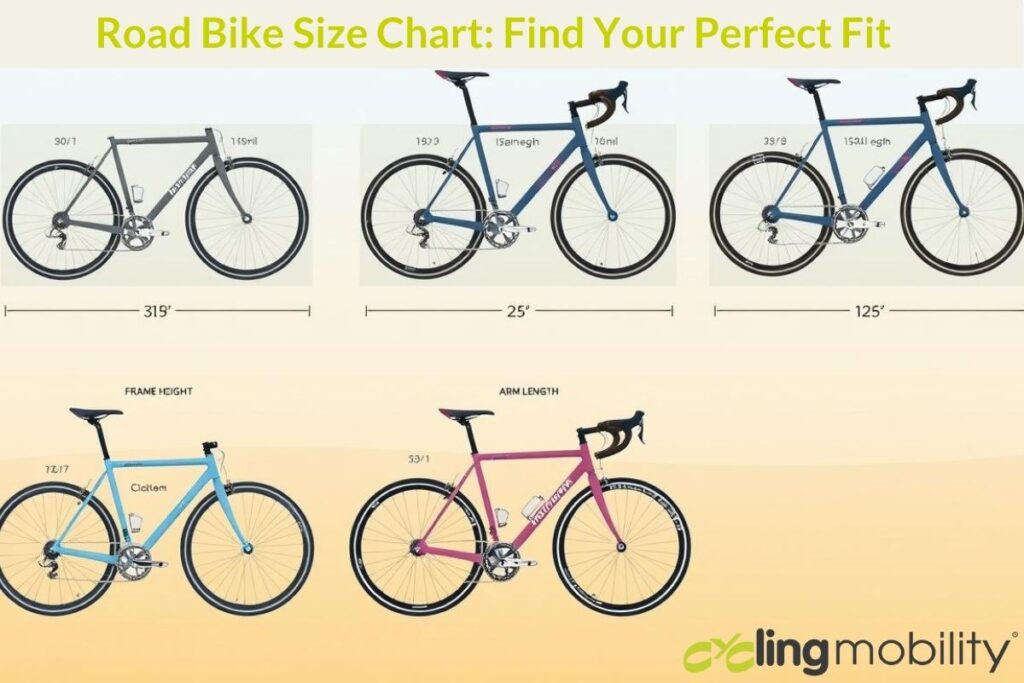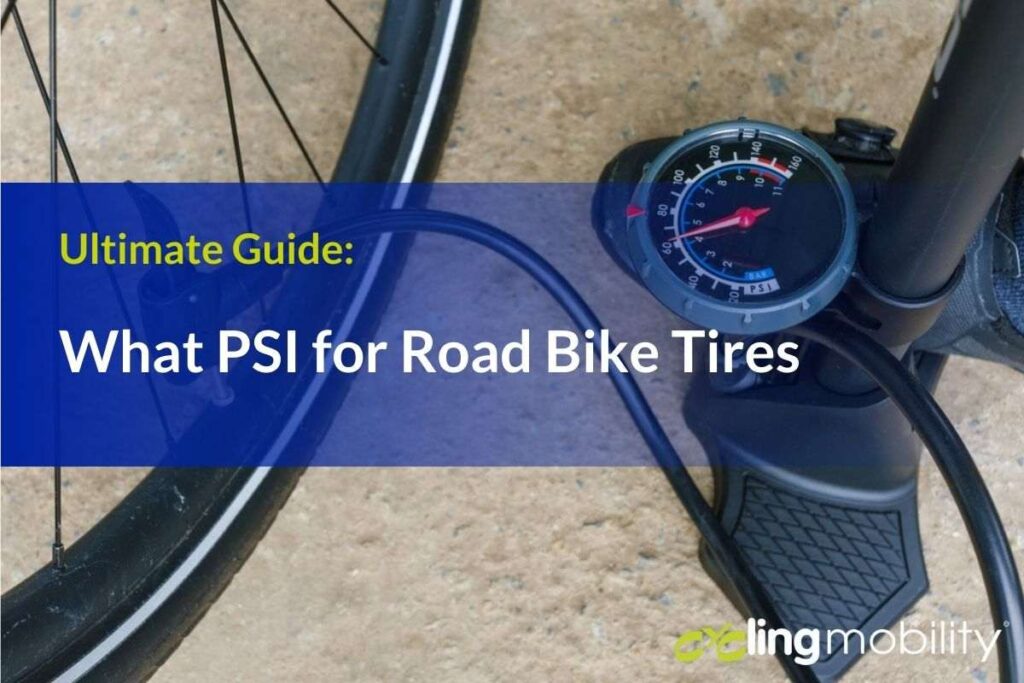Ever wondered why a bike looks great but feels off after a few miles? Knowing your ideal bike size can change your cycling game. In this article, we’ll dive into the road bike size chart to find your perfect match. This ensures your rides are both fun and efficient.
Finding the right bike size boosts comfort and performance. You’ll pedal for hours without discomfort. We’ll show you how to use the bike sizing guide based on your height, inseam, and riding style. Whether you’re new or experienced, knowing about road bike fit is key to enjoying your rides.
Key Takeaways
- Understanding bike sizing is crucial for comfort and efficiency.
- Measure your height and inseam for an accurate fit.
- The road bike size chart outlines sizes based on rider height.
- Different riding styles may require different bike sizes.
- Test riding can significantly improve your bike selection process.
Understanding Road Bike Sizing
You may be wondering, “How do I size a road bike?” Finding the right road bike fit is key to performance. It’s not just about feeling comfortable. It’s about how well you can pedal. A bike that’s too big or too small can cause discomfort and even injuries.
Whether you’re a beginner or an experienced cyclist, getting the perfect fit can seem tricky, but with a few key measurements and tips, you’ll be able to find the ideal bike for your height and riding style. Let’s break down everything you need to know to make the process simple and straightforward.

Importance of Correct Sizing for Performance
Proper sizing makes your ride better and less tiring. A bike that fits you right lets you pedal more efficiently. This means you can enjoy your ride without feeling worn out.
Many guides say to think about your height, inseam, and how you ride. Bike makers use sizes like XS, S, M, and L to help find the perfect fit. This makes finding the right bike easier.
How Height and Inseam Impact Road Bike Fit
Height and inseam are important for bike fitting. Sizing charts give the right frame sizes based on height. For example, XXS is for riders from 4′ 10″ to 5′ 0″.
Riders can choose a size based on their riding style. Experienced cyclists might pick a smaller frame for a more aggressive ride. Inseam also matters as it affects how comfortable you are while pedaling.
How to Measure Your Road Bike Size
Getting the right fit for your road bike is key. Knowing your height and leg inseam helps a lot. The right bike size makes riding more comfortable and efficient.
Measuring Your Height Accurately
To measure my height, I follow these steps:
- Stand straight with my back against a wall.
- Remove my shoes to get an accurate reading.
- Use a flat object, like a book, on top of my head, making sure it is level with the floor.
- Mark the wall where the book touches it.
- Measure the distance from the floor to the mark on the wall to get my height in centimeters.
This method gives a reliable height measurement. It’s important for sizing a road bike right.
Finding Your Leg Inseam Measurement
To measure my leg inseam, I do the following:
- Stand straight with my legs shoulder-width apart.
- Place a book or any flat object between my legs, pressing it snugly to simulate the bike seat.
- Measure from the top of the book to the ground to get the inseam measurement in centimeters.
Having both height and leg inseam measurements helps me find the perfect bike fit. This leads to a bike that’s just right for me.

Road Bike Size Chart: Choosing the Right Size
Finding the perfect bike size is key for a comfy and efficient ride. A detailed road bike size chart links bike sizes to rider height and inseam. Knowing how to pick the right bike size by height greatly improves your cycling. Below, I list typical bike sizes and recommended sizes for common heights for easy reference.
Typical Bike Sizes Based on Height
Here’s a chart to guide you on bike sizes based on height:
- XXS Frame: Suitable for heights 5’0″ – 5’3″ (Average inseam: 26”)
- XS Frame: Suitable for heights 5’3″ – 5’6″ (Average inseam: 27”)
- S Frame: Suitable for heights 5’6″ – 5’9″ (Average inseam: 28”)
- M Frame: Suitable for heights 5’9″ – 6’0″ (Average inseam: 30”)
- L Frame: Suitable for heights 6’0″ – 6’2″ (Average inseam: 31”)
- XL Frame: Suitable for heights 6’2″ – 6’4″ (Average inseam: 32”)
- XXL Frame: Suitable for heights 6’4″ and above (Average inseam: 34”+)
For example, if you want to know, “What size road bike for a 6-foot man?” the ideal size would typically be a Large frame, which accommodates those within the height range of 5’10” to 6’2″, with an average inseam of around 32 inches.
If you stand at an impressive height of 6’2″ to 6’4″, then the XXL frame is ideal for you. Designed to accommodate those reaching heights of 6’4″ and above, this frame usually pairs with an average inseam of about 34 inches or more.
When searching for the perfect fit, it’s useful to consult a road bike size chart mountain, which provides tailored advice for mountain biking. Both mountain and road bikes have specific sizing charts to follow, ensuring you select the bike that complements your physical attributes and riding style.
Recommended Sizes for Common Heights
Choosing the right bike size is crucial for comfort and performance. Here’s a quick guide for common heights:
- 5’0” to 5’3”: XXS
- 5’3” to 5’6”: XS
- 5’6” to 5’9”: S
- 5’9” to 6’0”: M
- 6’0” to 6’2”: L
- 6’2” to 6’4”: XL
- 6’4” and above: XXL

Factors Influencing Your Road Bike Fit
Understanding what affects road bike fit helps me choose the right bike. It’s not just about height and inseam. My riding style also plays a big role. Adjusting to my style can make riding more comfortable and efficient.
Riding Style Considerations
My riding style affects the bike size and geometry I choose. For example, aggressive riding needs a bike that supports a low, long position. This is called race geometry and is good for speed but not for long rides.
On the other hand, endurance geometry is better for long rides. It allows for a more upright, relaxed position. This is more comfortable for longer rides.
Frame Geometry and Its Impact on Fit
Frame geometry is key to a good road bike fit. Measurements like headtube length and effective top tube length matter. A longer headtube can make the handlebars higher, which is more comfortable for an upright position.
Effective top tube length affects how I reach and sit on the bike. It impacts control and aerodynamics.
Chainstay length and wheelbase also affect the bike’s stability. This impacts how it handles and responds on the road. When sizing bikes, remember that small adjustments like saddle height and stem length matter a lot. Even a well-fitted bike can feel off without these tweaks. Understanding these factors improves my cycling experience, balancing comfort and performance.
Key Measurements for Road Bike Geometry
Choosing the right road bike means knowing the key measurements. These dimensions affect how the bike handles and feels on the road. The top tube length, seat tube length, and head tube length are key to consider.
Effective Top Tube Length Explained
The effective top tube length is crucial for rider comfort. It determines how stretched out or upright you’ll be while pedaling. A longer top tube is better for racing, offering an aerodynamic position.
A shorter top tube is great for longer rides or casual cycling. It allows for a more relaxed posture. Knowing this helps match the bike to your body and riding style.
Understanding Seat Tube and Head Tube Length
Seat tube length affects your leg extension and riding position. It’s important that your inseam matches the seat tube length for comfort and efficiency. Head tube length, on the other hand, impacts handlebar height.
A taller head tube raises the handlebars, ideal for those who like an upright position. Bike geometry charts from manufacturers help you make the right choice when buying a new bike.
Test Riding and Professional Fitting
Finding the perfect fit for my road bike is a hands-on process. Test riding bikes let me feel how different sizes fit. It’s crucial to test ride different sizes to find the right one for me.
Advantages of Test Riding Different Sizes
Every rider is different, and so is their bike size preference. While size charts are helpful, nothing beats the real ride. Riding different sizes helps me find the bike that feels just right.
- Comfort level while seated and pedaling
- Handling and responsiveness during turns
- Overall feel and stability
- Reach to the handlebars and pedal position
By test riding different sizes, I choose a bike that fits my style and body. Every little adjustment can make a big difference in my ride.
Benefits of Professional Bike Fitting Services
Getting a professional bike fitting is a game-changer. These services tailor the bike to fit me perfectly, considering my measurements.
- Leg inseam length
- Body proportions
- Preferred riding positions
Knowing the benefits of bike fitting shows how it can change my rides. A well-fitted bike makes every ride better, more comfortable, and less tiring. With expert help, I know I’m riding the best bike for me.
Conclusion
Finding the right bike size is key to a better cycling experience. A road bike size chart helps match bike size with height and inseam. This ensures a good fit for everyone, from 5’0″ to 6’5″.
Getting the inseam right is crucial for an optimal bike fit. The right size bike improves how you ride. It’s all about matching the bike to your riding style and comfort.
I suggest using the bike fit summary as a starting point. But, don’t forget to get a professional bike fit if needed. This will make your rides more comfortable and fun. Finding the right bike size is easier than you think with a little effort.






